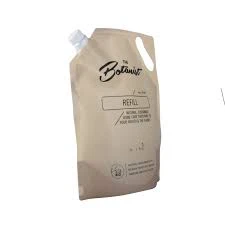custom die cutting
The Art and Science of Custom Die Cutting
In the world of printing and packaging, custom die cutting has emerged as a leading technique for creating unique shapes and designs. This process involves the use of a specialized machine, known as a die-cutting machine, to cut materials into precise shapes and sizes that are often difficult, if not impossible, to achieve with traditional cutting methods. From intricate designs for invitations to bespoke packaging for products, custom die cutting has a variety of applications that make it indispensable in various industries.
What is Custom Die Cutting?
At its core, die cutting is the process of using a die, which is a specialized tool made from steel or other materials, to cut sheets of material, such as paper, cardboard, plastic, or fabric, into specific shapes. When we talk about custom die cutting, we are referring to the tailored creation of these dies to meet specific needs or designs as dictated by a customer's requirements. This customization allows for flexibility, creativity, and innovation in design, enabling businesses to stand out in a crowded marketplace.
The Die Cutting Process
The die cutting process generally includes several key steps
1. Design The first step is to create a design for the die. This design is often crafted using specialized software and should consider both the material properties and the end-use of the product.
2. Die Creation Once the design is finalized, a die is created. This involves cutting the die itself, which can be single-dimensional (like a simple cutout) or multi-dimensional (like a box with folds). Each die is precision-engineered to ensure accuracy and consistency in the cutting process.
3. Cutting The material is then placed in the die-cutting machine, where the die is pressed against it. The machine exerts pressure that forces the die to cut through the material, resulting in the desired shape.
4. Finishing After the material is cut, additional finishing processes may be required, such as scoring, which makes folding easier, or embossing, which adds texture and depth to the design.
Advantages of Custom Die Cutting
custom die cutting

Custom die cutting offers numerous advantages across various sectors
- Precision and Consistency Custom die cutting ensures that each piece is cut to the exact specifications set out in the design. This precision is vital for logistics and assembly in manufacturing, as it minimizes waste and ensures each part fits together perfectly.
- Versatility Custom die cutting can be used on a wide range of materials, making it an attractive option for industries ranging from packaging and labels to custom crafts and fashion design. The ability to customize shapes allows businesses to implement innovative designs that can elevate their products.
- Cost-Effectiveness While there are initial setup costs associated with creating a custom die, the efficiency gained in production can lead to lower costs in the long run. Bulk production using die-cut designs often results in lower per-unit costs.
- Enhanced Branding Custom shapes can make products more visually appealing and can help brands differentiate themselves from competitors. Packaging and promotional materials that incorporate unique die-cut elements tend to attract more attention and can boost sales.
Applications of Custom Die Cutting
The versatility of custom die cutting allows it to be employed across various industries. In the packaging sector, custom die-cut boxes and inserts enhance product presentation and protection. In the realm of printed materials, business cards, brochures, and invitations can all benefit from customized die-cut shapes that add a dimensional element to traditional designs.
Moreover, the craft industry has embraced die cutting, with hobbyists and professionals alike using die-cutting machines to create intricate designs for scrapbooking, card making, and more. Businesses focused on personalization—such as wedding planners, event coordinators, and custom gift creators—also find die cutting indispensable as it enables them to deliver personalized touches to their products.
Conclusion
Custom die cutting stands as a powerful tool in the arsenal of modern design and manufacturing. Its ability to create precision-crafted designs at scale offers endless possibilities for innovation and creativity. As technology advances and the demand for unique, tailored products grows, custom die cutting will undoubtedly continue to play a crucial role in shaping the future of various industries. Whether for practical applications or artistic endeavors, the art and science of custom die cutting are here to stay.













